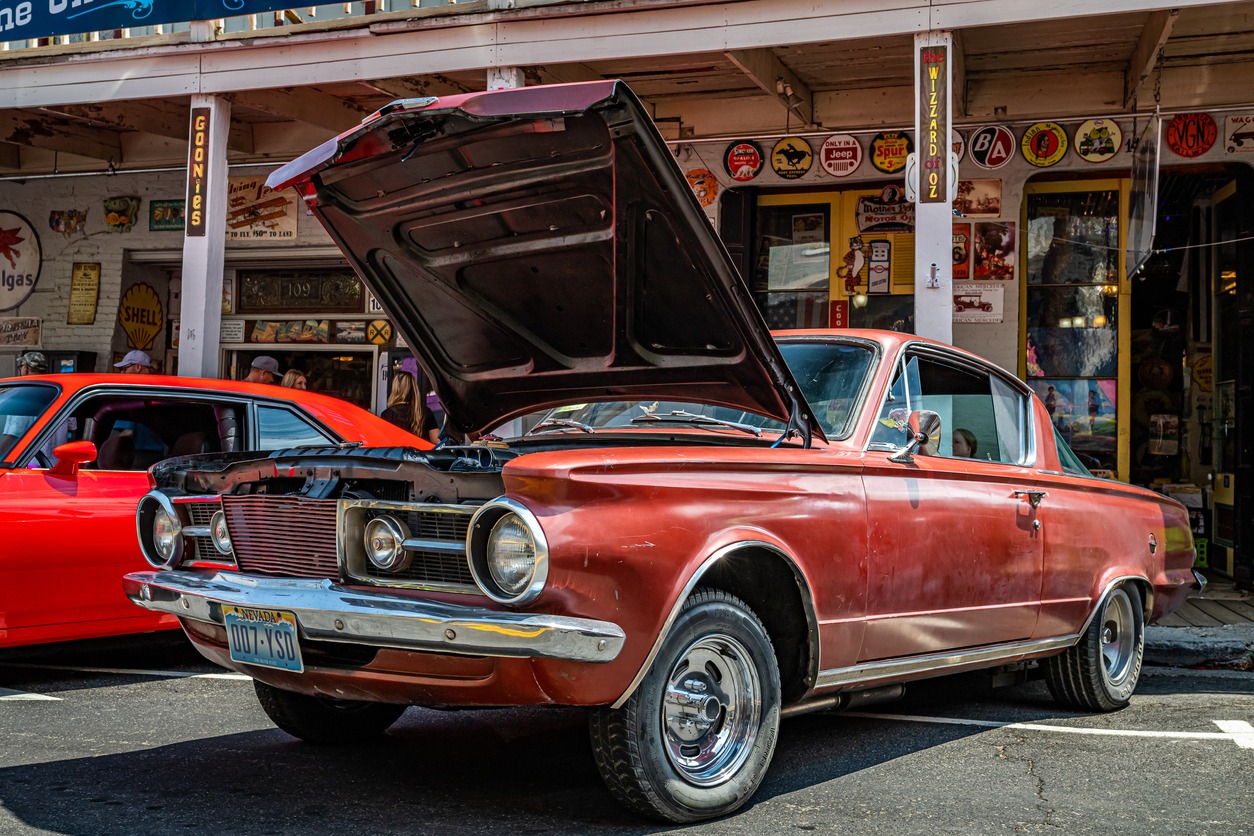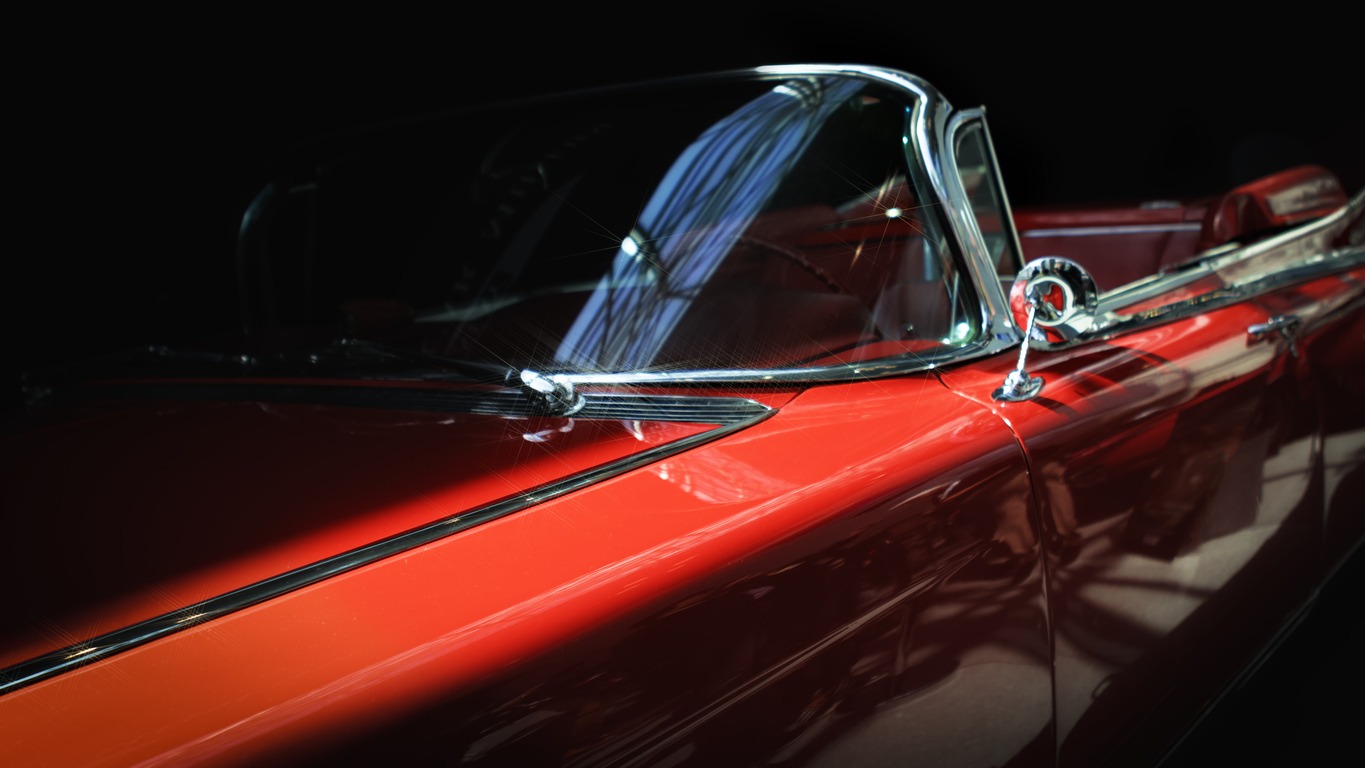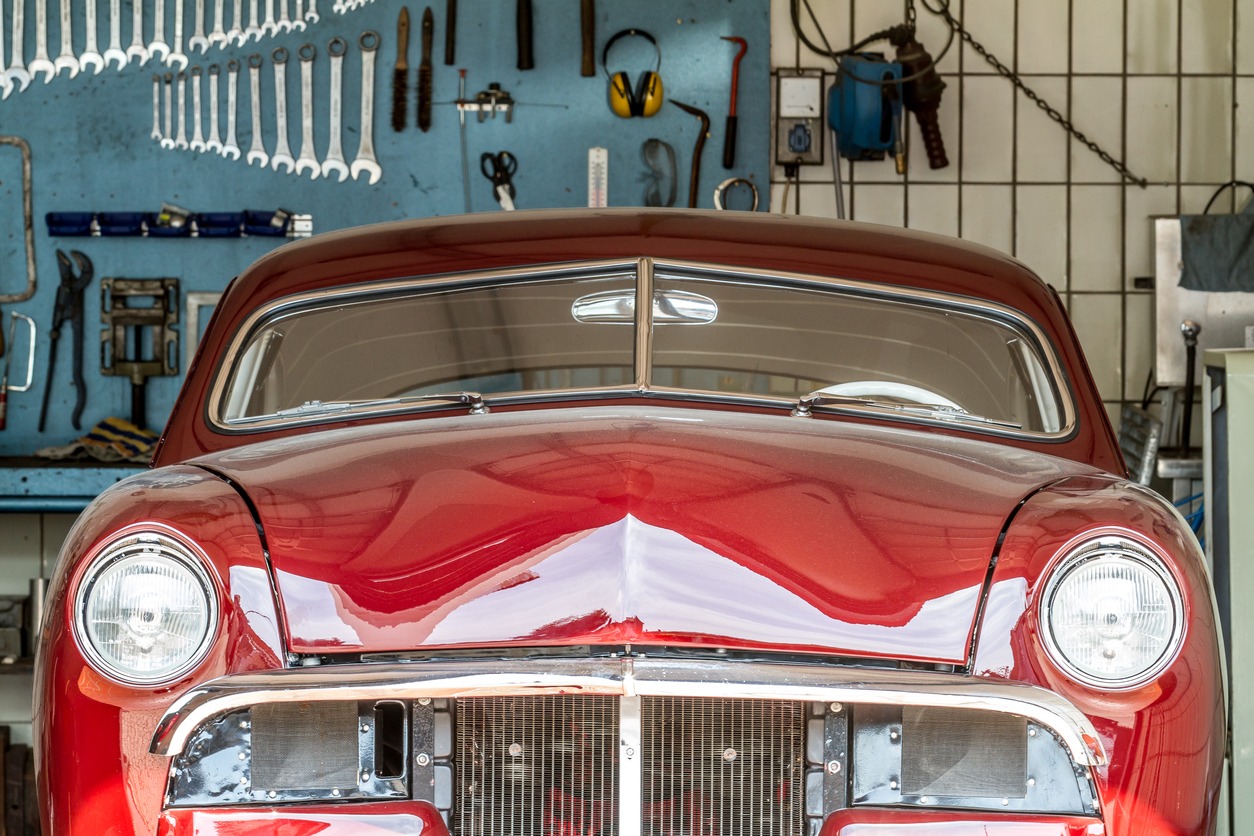Caring for a classic or vintage car can differ greatly from maintaining a modern vehicle. These classic beauties demand extra attention and TLC to keep their vintage appeal and ensure their parts don’t succumb to wear and tear. And for anyone who owns a classic car, the upkeep and preservation is also part of the fun
If you’re just dipping your toes into the world of classic car ownership, learning how to maintain your new “old” car can seem daunting. But don’t worry; we’ve got you covered with this easy-to-follow guide on classic car care.
Keep it clean
This is the most basic and important step in car maintenance. Like with any other car, keeping it clean is not just about keeping its appearance or practicing good hygiene – it’s an essential aspect of its upkeep. Then, dry it out with a rag to prevent watermarks from forming.
An excess of grime can lead to problems like chipping paint and, eventually, rust. After washing your vehicle, it’s crucial to dry it off with a soft rag. This step isn’t just about getting rid of water spots – it’s also about removing any leftover soap that might harm the paint.
After every drive, make it a habit to hose down the undercarriage. This is particularly important if you’ve driven on salted roads, as salt and road dirt are notorious for causing corrosion on untreated metal surfaces. Those sneaky little particles can lead to surface rust on the underside of your car, affecting areas like the suspension, exhaust, and frame. So, a thorough rinse, especially of your tires, is essential to stop rust in its tracks.
But let’s not forget about the interior. Regular vacuuming of the cabin and seating areas is key. Dirt buildup can cause dampness, and before you know it, you might be dealing with a rusty floor. Clean any vinyl and cloth regularly.
Set up a maintenance schedule
Owning a vintage car is a commitment to regular maintenance. Unlike modern vehicles, which often come with maintenance reminders and more durable parts – vintage cars need a more hands-on approach.
Check the car’s key components regularly
During maintenance, here are the parts to check:
1. Engine and oil
The engine is the heart of your vintage car, and caring for it is crucial to keep it operating smoothly. Engine checks include monitoring oil levels, checking for leaks, and replacing old oil.
If your classic car is driven frequently, change the oil every 3,000-5,000 kilometers. However, moisture can build up and affect the oil’s lubrication if it’s mostly sitting in the garage, particularly in humid climates. In such cases, changing the oil every six to nine months is advisable.
Each oil change is also an excellent opportunity to check the rubber components like belts, hoses, and seals. Replace any parts that show signs of swelling, leaks, or cracks. Check for any leaks and address them promptly. Tune-ups, including spark plug and filter changes, should be done as per the vehicle’s needs to ensure optimal performance.
Also, make sure you use the correct type of oil, considering the age and specific requirements of your vehicle’s engine. Pay attention to any unusual noises or changes in performance, as these can indicate underlying issues.
2. Transmission and Suspension
The transmission and suspension in vintage cars often require a careful approach to maintenance. Regular checks of the fluid levels and quality are essential for the transmission. If the fluid is dirty or has a burnt smell, it’s time for a change.
The suspension system, which may consist of older technology like leaf springs or early coil systems, needs regular inspection for wear or damage. It’s important to lubricate any moving parts to prevent stiffness or squeaks. Also, please pay attention to the shocks and struts, as they are critical for a smooth ride.
3. Brakes
Brakes are highly important, so checking their condition regularly is essential. This includes inspecting brake pads, fluid levels, and lines for any signs of wear or leakage. When you take your car out, pump the brakes to keep them in good condition and alert you if maintenance is needed. Additionally, bleed and replace the brake fluid at least once a year to maintain optimal stopping power.
4. Tires
Tires should be checked for proper inflation, tread depth, and signs of aging or damage. Remember, even if they look okay, tires on vintage cars might need replacement due to age-related deterioration. Remember that old tires can be a safety hazard even if the tread looks fine. Rotate them as recommended and replace them if they show signs of aging or damage.
As a default, vintage tires should be replaced every six years, regardless of their appearance. This is important for safety and to prevent issues like blowouts that can damage your car.
5. Electrical System
The electrical system in vintage cars can be finicky, given its age and its less sophisticated technology. Regularly clean and tighten battery connections to avoid starting issues. Check for frayed wires or corroded terminals, as these can lead to electrical failures.
Keep the battery, especially if the car is not driven regularly. Consider investing in a trickle charger to maintain battery health. You can also consider upgrading the grounding cables and adding a modern fuse system to enhance the electrical system’s reliability greatly.
6. Cooling System
Overheating can be a common problem in older cars. Ensure the radiator is clean, the coolant is at the right level, and there are no leaks.
7. Suspension and Steering
Inspect these for wear or damage, especially in components like bushings, bearings, and joints, which can deteriorate with age.
8. Coolant
Make it a habit to check the oil, coolant/antifreeze, brake fluid, and transmission fluid levels. Running your classic car with low fluid levels is a recipe for disaster, potentially leading to catastrophic engine damage. This is especially important for the coolant/antifreeze; ensure it’s winter-ready to prevent freezing when the car is not being used for extended periods.
Preserve the exterior bodywork
The exterior of a vintage car is often its most striking feature. While it’s essential to clean it regularly, you also have to clean it using the right materials. Use gentle, automotive-specific cleaning products and soft cloths or sponges to avoid scratching the surface.
Rust is one of the biggest enemies of a vintage car. To prevent rust, regularly inspect the body for any chips or scratches in the paint that can expose the metal underneath. Treat these spots promptly with appropriate touch-up paint or rust treatment. Pay special attention to the undercarriage and wheel wells, as these areas are more prone to rust. It can be worthwhile to invest in a rust-preventive product can be a worthwhile investment.
After cleaning, apply a high-quality wax to protect the paint and give it a vibrant shine. This not only keeps your car shiny, but it also provides a protective barrier against environmental elements. For classic cars, it’s smart to reapply wax every few months. If you want that extra sparkle and preservation, consider using a hard wax. Do a great job at preserving your car’s exterior, and you’ll be car show-ready in no time!
Don’t forget to care for the interior
The interior of a vintage car, with its unique upholstery and classic fittings, demands special care. Leather seats and surfaces should be regularly cleaned with a suitable leather cleaner and conditioned to prevent cracking and fading.
For fabric upholstery, use appropriate cleaners that won’t damage the material or fade the colors. Regular vacuuming helps prevent the accumulation of dust and grime.
Wood, metal, or plastic trim should be cleaned and polished to maintain their condition. Remember to treat the dashboard and any rubber seals with protectants to prevent UV damage.
Provide suitable storage for your vintage car
The location of storage is crucial. If you live in an area with extreme weather – be it hot, cold, humid, or wet – indoor storage is the way to go. Exposure to direct sunlight can wreak havoc on your car’s paint job, while humidity can lead to rusting of various components. An ideal storage space should be dry, well-ventilated, insulated, and temperature-regulated. A heated garage comes highly recommended by most classic car professionals, as it offers a controlled environment that protects your car from external elements.
Here are your storage options for keeping your vintage car safe and secure:
1. Brick Garage
A brick garage, whether attached to your house or a standalone structure, is the best storage for a classic car. Bricks are excellent at maintaining a stable temperature and keeping the environment dry, which is key to preventing condensation in cold conditions.
While it’s stored in the garage, monitor its temperature. If it varies greatly between seasons, you’ll need to take steps to protect your car. Crack open the car windows a bit to allow air to circulate.
If there’s a noticeable gap under the garage door, cover your car during cold weather to prevent condensation. You may also need to upgrade your garage door locks. Standard locks might be easy to break into, so adding padlocks can increase security.
2. Pre-Cast Concrete or Wooden Unit
Consider a pre-cast concrete or wooden unit if a brick garage isn’t feasible. These can be quicker alternatives if you’re short on space, time, or budget and still offer solid protection from the elements.
However, be aware that concrete can reduce airflow, increasing the risk of mold and mildew. To prevent this, run a fan in the space occasionally to circulate air.
If using a barn or outbuilding, cover your car to protect it from animals or dampness. Pop-up structures like gazebos can also be a temporary solution, offering some shelter.
3. Outdoors
If indoor storage isn’t an option and you must store your car outside, there are certain factors to consider.
Avoid placing your car on surfaces like gravel or sand, as these can be breeding grounds for moisture. Also, ensure the surface has good drainage to prevent water from pooling under the vehicle.
You will need a car cover specifically made for your car model. This ensures maximum protection and a snug fit to prevent damage from the wind. If a custom-fit cover isn’t available, choose one slightly larger and secure it well. Make it a goal for your car from sunlight, bird droppings, tree sap, and moisture.
While you may choose to recycle, avoid using standard tarpaulins as they don’t allow the car to breathe, leading to condensation, mold, and mildew.
Store your vintage car properly
Following best practices for storing a vintage car is an essential aspect of its maintenance, especially as summer turns to autumn and winter. As the weather cools and driving conditions become less ideal, it’s time to think about tucking your classic car away safely.
Before sending your classic car off to its winter slumber, there are a few key steps to ensure it stays in perfect condition:
1. Check the storage space
First things first, the place where you plan to store your car should be clean, dry, and free from damp. Any moisture around could lead to corrosion or mold, which is the last thing you want.
2. Clean, polish, and wax the car
To keep corrosion at bay, your car needs to be absolutely spotless. Give it a good clean, and don’t forget to wax the paintwork for extra protection. It’s crucial that the car is bone dry before it goes into storage – moisture is a surefire way to invite rust. And while you’re at it, lubricate any rubber parts to prevent them from perishing.
3. Open the windows a bit
Leaving the windows slightly open helps keep the cabin fresh and odor-free. It also aids in preventing mold. However, be mindful of tiny critters like mice; make sure there’s nothing inside the car that might attract them. If you have a convertible, store it with the top-up to maintain its shape and prevent the material from shrinking.
4. Disconnect the battery
Batteries tend to lose charge over time when not in use. Disconnecting the battery can help preserve its charge. Alternatively, you could either run the car for about 10 minutes every few weeks or use a smart charger, which will keep the battery topped up as needed.
5. Protect from sunlight
If your storage space gets direct sunlight, take steps to protect your car’s paintwork. Classic car paints can be particularly sensitive to sun damage. The best way to shield your car from the sun is by using a breathable cover designed specifically for your model.
Take it out to drive regularly
For car collectors, while the instinct might be to keep these prized possessions in storage, it’s important to remember that classic cars need to be driven periodically. Think of it as taking your car for a leisurely stroll; once every two weeks is ideal. This regular exercise helps circulate fuel and lubricants through the engine, preventing moisture buildup and keeping rubber parts from becoming brittle.
Before you head out, don’t skip the usual pre-driving checks. Ensure the fluid levels, suspension, tires, air, and brakes are all in good condition. For classic cars, it’s wise to flush the coolant annually to keep the cooling system free from corrosion. A 50/50 mix of distilled water and coolant is typically suitable for most vehicles, but when in doubt, a pre-mixed coolant is a safe bet.
Let’s not forget about lubricating the driveline. Like their modern counterparts, classic cars have driveline components, including the gearbox and differentials, that need regular lubrication. Aim to check and replace gear and differential oils every two to three months, if possible.
Even if you’re not taking your car out regularly, starting the engine every couple of weeks is a great idea. It helps recharge the battery and circulates the fluids, keeping the engine in good health. Plus, it gives you that reassurance that your car is always ready for a drive whenever the mood strikes.
Don’t drive it in bad weather
Driving in adverse weather conditions, especially during the rainy season, is best avoided with a classic car. Acid rain, a result of decades of pollution, can leave stubborn marks on window glass and damage the bodywork. Moreover, modern highways and roadways treated with chemicals can lead to corrosion on the car’s under-chassis during floods, mainly if the car’s rustproofing is outdated.
Be mindful of the road conditions as well. Potholes and uneven road surfaces can be tough on an older car’s suspension system. And those unpredictable road humps? They can range from gentle rises to abrupt, steep bumps, causing discomfort and potentially rattling your classic car’s bolts.



